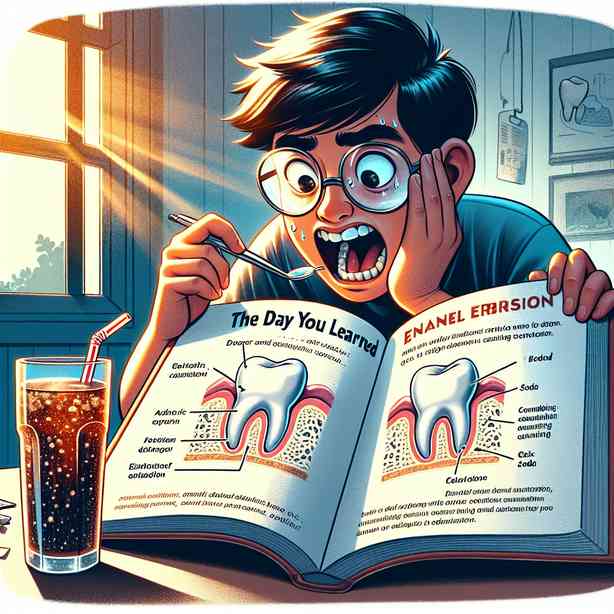
Enamel erosion is a topic that often flies under the radar in discussions about oral health. Many people may not even realize the significance of this issue until they experience symptoms firsthand. This article aims to provide you with in-depth insights about enamel erosion, its causes, effects, and preventive measures. Understanding this critical aspect of dental hygiene will help you make informed decisions about your oral health, enhancing not only the longevity of your teeth but also your overall well-being.
To begin with, it is essential to understand what dental enamel is and its role in our oral health. Enamel is the outer protective layer of our teeth, primarily composed of minerals, chiefly hydroxyapatite. It serves as a barrier against physical damage and protects the underlying dentin and pulp from bacteria and decay. The strength of enamel is impressive, but it is not invincible. Over time, various factors can lead to its erosion, resulting in increased sensitivity, discoloration, and a higher risk of cavities.
One of the primary causes of enamel erosion is dietary habits. Consuming acidic foods and beverages is one of the most significant contributors to this issue. Citrus fruits like lemons and oranges, carbonated soft drinks, and even certain health drinks can lower the pH in your mouth. When the pH level drops, it can lead to the dissolution of enamel, slowly weakening it over time. Thus, being mindful of your diet is crucial for maintaining enamel health.
In addition to dietary factors, certain medical conditions can contribute to enamel erosion. Gastroesophageal reflux disease (GERD) is one such condition, where stomach acid flows back up into the esophagus and reaches the mouth. This exposure to acid can erode tooth enamel, leading to significant dental issues. Similarly, conditions like bulimia, which often entail acid exposure from vomiting, can be particularly destructive to enamel. It is vital to recognize these health issues and seek medical advice if you suspect they may be impacting your dental health.
Another factor contributing to enamel erosion is poor oral hygiene. Regular brushing and flossing are fundamental practices that help remove plaque and food particles stuck between your teeth. Plaque is a sticky film of bacteria that forms on your teeth and produces acids that can attack enamel. If not adequately removed, this acid can perpetuate the cycle of enamel erosion and lead to serious dental complications. Therefore, maintaining a robust oral hygiene routine is indispensable for anyone wanting to preserve their enamel.
Moreover, the use of certain medications may negatively impact enamel integrity. Medications that cause dry mouth, for instance, reduce saliva production. Saliva plays a crucial role in neutralizing acids in the mouth and aids in the remineralization of enamel. When saliva is scarce, the risk of enamel erosion increases, exposing your teeth to a higher likelihood of decay. If you are on medications that have this side effect, it is advisable to consult with your healthcare provider for alternatives or additional measures to protect your enamel.
While the signs of enamel erosion can be subtle at first, they can become more pronounced over time. You might notice increased tooth sensitivity to hot or cold foods and beverages. Discoloration often accompanies these changes, as the enamel wears away and reveals the darker dentin beneath it. In some cases, you might also observe the appearance of small dents or grooves in your teeth. It is crucial not to ignore these symptoms, as they can escalate into more significant issues, including cavities or tooth loss.
Preventing enamel erosion requires a multifaceted approach. First and foremost, you should limit the consumption of acidic foods and beverages. Try to rinse your mouth with water after consuming such items to help neutralize the acid. Additionally, using a straw when drinking acidic drinks can minimize contact with your teeth. Opting for whole foods over processed options can also reduce the likelihood of acid exposure.
Investing in a high-quality fluoride toothpaste can further aid in the prevention of enamel erosion. Fluoride helps to remineralize enamel and create a stronger barrier against acids. Dental professionals often recommend toothpaste that features fluoride as an essential element in any dental hygiene routine. Regular dental check-ups are equally important, as your dentist can monitor your enamel health and provide timely interventions if needed.
Finally, it is crucial to engage in open communication with your dental care provider. If you have concerns about enamel erosion or its underlying causes, do not hesitate to share them during your next dental visit. Your dentist can offer tailored solutions and may even recommend specialized treatments such as fluoride varnishes or dental sealants to bolster your enamel’s defenses.
In summary, the day you learn about enamel erosion is a pivotal moment in your journey toward improved oral health. Understanding the factors that contribute to this condition allows you to take proactive steps to protect your teeth. By educating yourself about dietary choices, practicing good oral hygiene, and consulting with healthcare professionals, you can combat enamel erosion effectively. Remember, prevention is always better than cure, and a little knowledge can go a long way in ensuring your teeth remain healthy and strong throughout your life. Taking these steps will not only benefit you today, but they will also serve you well in the years to come, making your smile brighter and your dental experiences far more pleasant.


